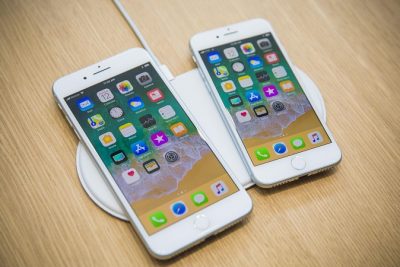It was that time of the year when tech enthusiasts around the world hold their breaths and wait anxiously for the next offering by the tech powerhouse Apple. Tech evangelists spend hours breaking down every possible news the rumour mills churn out and then once again break down every new feature once the phone is finally launched. Price is no barrier to the cult of fans that this brand has amassed but is it just the promise of the most revolutionary design and technology that has driven hordes of people line up for its products over the years? Or is a deeper phenomenon at play here!

Daniel Kahneman in his book “Thinking Fast and Slow” has broken down our decision making process into two parts, identified as System 1 and System 2, the former being reflexive and impulsive while the latter is logical and deliberate. While we often consider ourselves to be thinking with our system 2 mind, it is often the system 1 that runs the show. And brands like Apple have very deftly learnt to cater to our System 1 thinking, something that played out very well in the latest iPhone X launch!
Perhaps the best example of how Apple has employed Behavioural Economics to its advantage is through the concept of
Heuristics, which essentially represents a process of substituting a difficult question with an easier one, leading to cognitive biases. This is one of the reasons why no matter what argument you put in front of an Apple fan, he is going to continue defending its products, because “Affect Heuristic” is in play here, in which people make judgment and decisions by consulting their emotions (System 1) rather than Logic (System 2). The search for information and arguments is mostly constrained to information that is consistent with existing beliefs and not with the intention to examine them – Something that the overbearing persona of Steve Jobs has deeply ingrained in our minds.

Apple is probably one of the few consumer goods companies which has deftly employed “Herd Behaviour” to drive sales of its products. The idea of herding has a long history in philosophy and crowd psychology. This effect is evident when people do what others are doing instead of using their own information or making independent decisions. The long lines in front of Apple Stores and your closest friend and colleagues flaunting their new iPhone pushes you to try it for yourself as well.
Ever wondered why Apple comes out with only one or two products every year while its competitors churn out new models by the dozens! That’s the “Choice Paradox” at play. Having too many choices has been associated with unhappiness
decision fatigue, as well as choice deferral—avoiding making a decision altogether, such as not buying a product. Apple has realized this and perfected the art of identifying the perfect number of choices to be offered. Each time driving its legion of fans into a frenzy once a new model or product line is launched.
The natural question that arises now is with the iPhone X launch, has Apple broken from away from this concept? Could launching three new models drive down sales for Apple! NO. That’s simply Apple showing the middle finger to all its sceptics – in behavioral economics terms of course. Apple knows it cannot fulfill too many orders for the iPhone X with its OLED screens and has therefore employed the
“Compromise Effect” by pricing it exorbitantly high. When choosing something, the Compromise Effect is the tendency to avoid an extreme choice. As the middle ground feels safer, decisions which exclude extremes are made far more readily. So the iPhone 8 seems like a much attractive choice, even though it’s barely an improvement over its earlier model.
One thing this tells us is that Apple knows us much better than we think. By using such behaviour economics concepts, it has captured the irrationality in each consumer, opening the floodgates for other companies to turn towards our system 1, something that so far has only remained the turf of politicians! But more on that later.
—————————–
About the Author:
Abhishek Agarwal
Class of 2018, IIM Shillong




